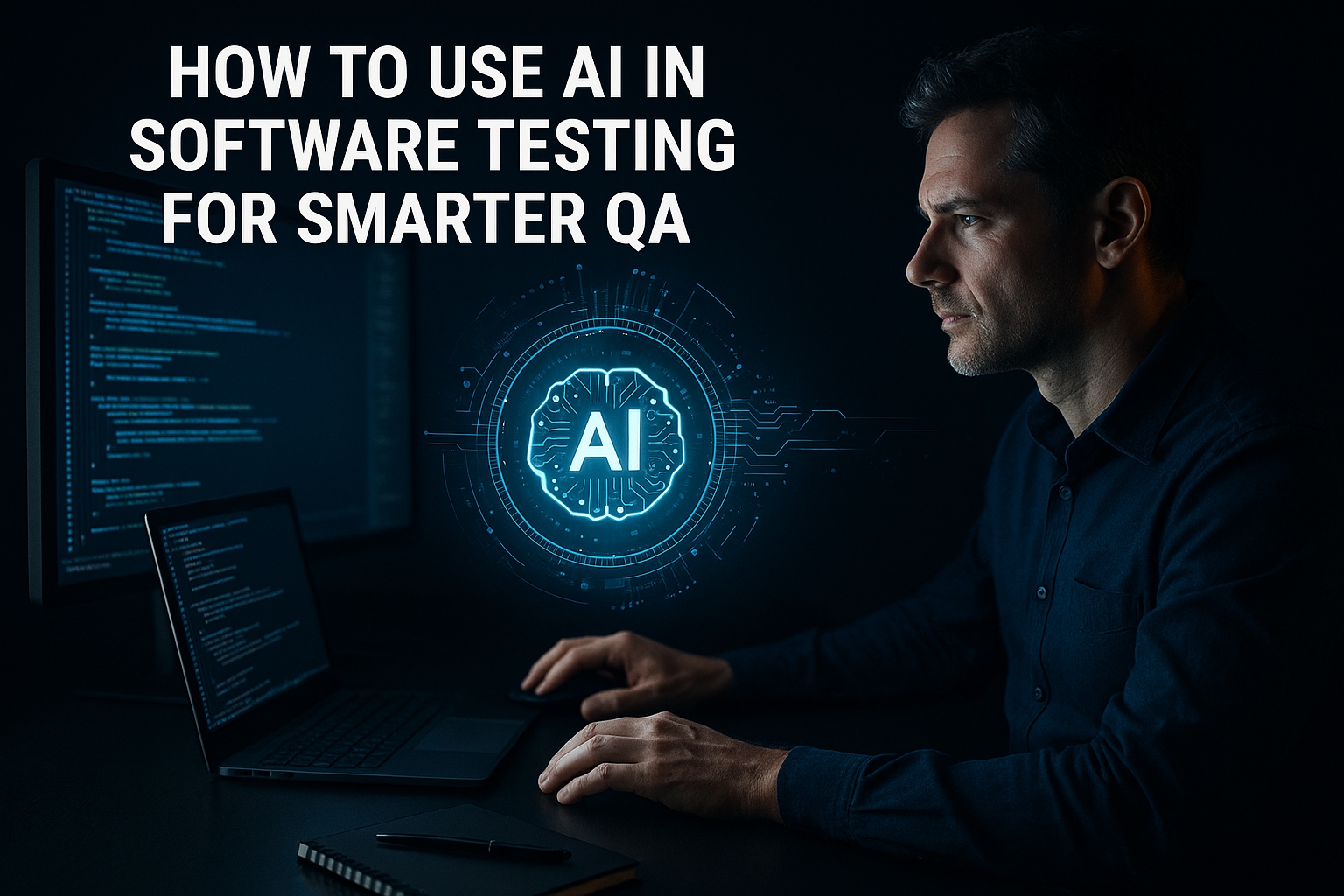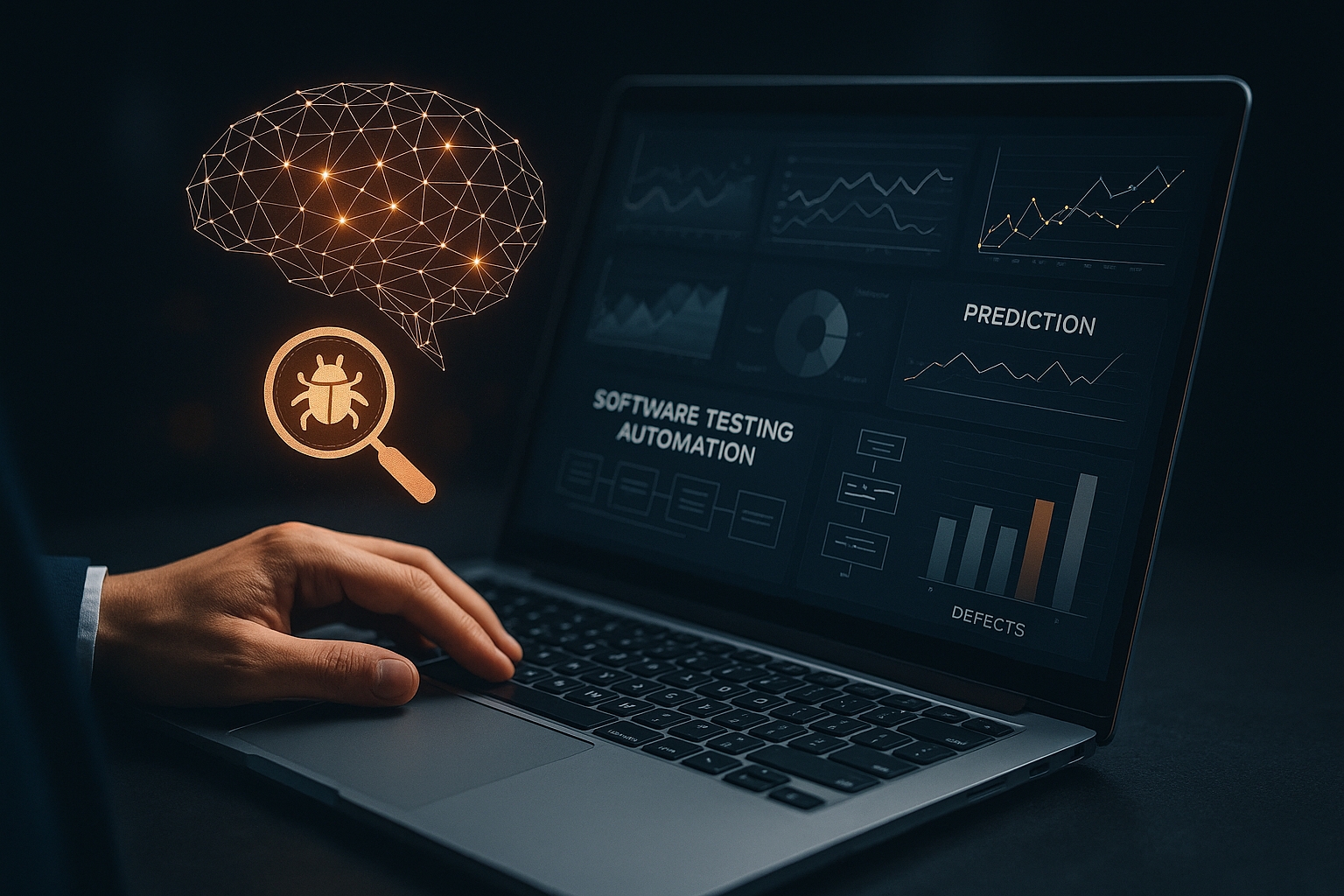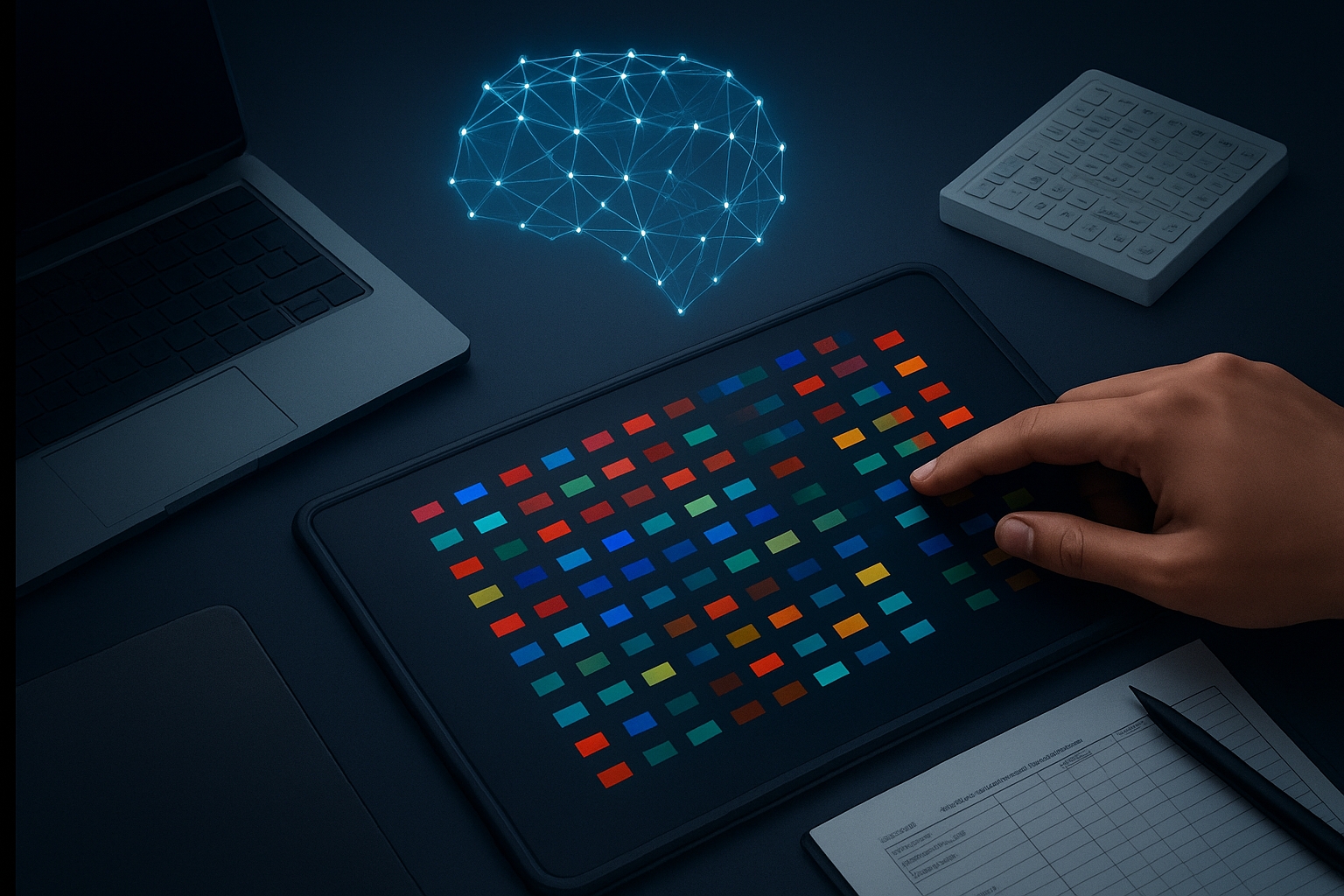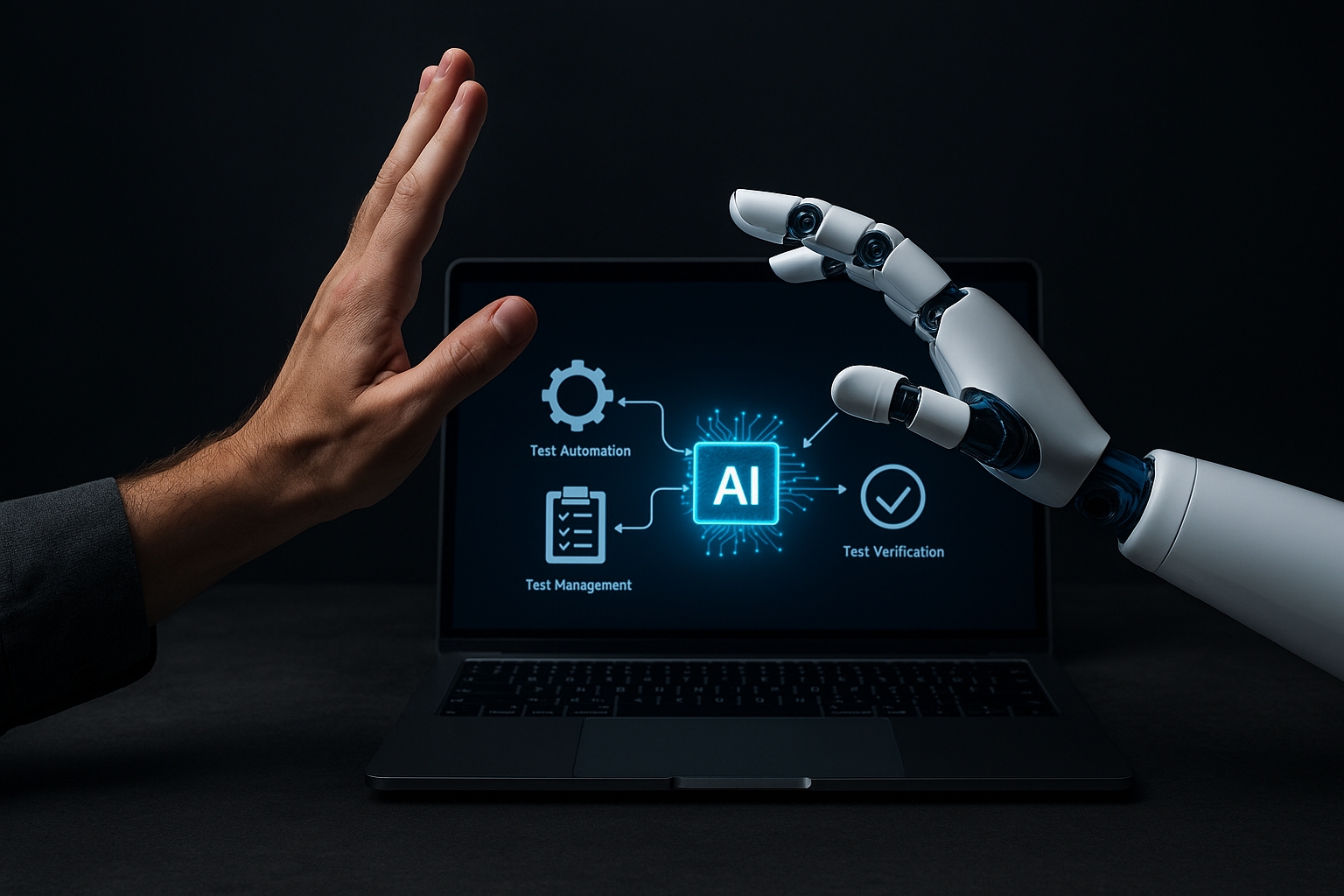AI has transformed software testing by eliminating slow, error-prone manual methods and delivering faster, more accurate, and broader test coverage. With automated test generation, smart UI testing, and defect prediction, QA is now quicker, more reliable, and highly efficient.
However, since AI-driven software testing relies on training and running complex models, it demands a robust infrastructure with strong computing power and parallel processing capabilities to ensure optimal performance and accuracy.
By setting up an RDP server through a top RDP provider with powerful hardware and a fast connection, hardware limitations are no longer a concern. With this strong foundation, you can confidently explore AI in software testing and take your first steps.
Main Use Cases of AI in Software Testing
Software testing has traditionally relied on human expertise, but to take it further, AI can be used to complement human intuition, pushing beyond simple checklists. To make this possible, you need a strong infrastructure.
That’s where selecting the right RDP server from the top RDP server provider comes in. A high-performance RDP server provides the computing resources, storage, and connectivity required to run advanced AI models efficiently.

Then you can safely integrate the following AI-powered technologies into your software testing plan:
Automated Test Case Generation
Traditional test case writing is slow and prone to errors. Using AI and ML, test cases are auto-generated from system design, code, and user requirements, boosting both testing speed and coverage.
Self-Healing Test Automation
To keep automated tests effective after software changes, test scripts must be updated. Self-healing test automation automatically detects and fixes test scripts through regression testing, ensuring accuracy and reliability without manual updates.
Predictive Defect Analysis
Defects cause delays, poor UX, and security risks, making development tough. Using ML and data analytics for defect prediction helps testers spot potential issues early, focus on high-risk areas, and reduce post-release failures.
Intelligent Test Prioritization
Optimizing test execution order is key to early defect detection and efficient resource use. AI tools analyze usage intensity, code changes, and past defects to prioritize critical tests, directing your attention to where it matters.
Visual Testing and UI Verification
AI tools in test automation use image recognition to identify UI issues and layout flaws. This ensures design standards are met and a consistent experience is maintained across devices, even after updates.
Performance and Load Testing Optimization
Measuring response time, resource usage, and throughput can be tricky. AI in performance testing helps analyze these factors, simulate real traffic, predict system behavior, and identify bottlenecks to boost performance and scalability.
Test Data Generation and Management
Test data is crucial for validating performance, efficiency, and security. Instead of manual generation, AI algorithms analyze app requirements and patterns to automatically create accurate and consistent test data.
AI-Driven Security Testing
Using AI in software testing helps predict and fix vulnerabilities before they can be exploited. It also detects subtle anomalies and unusual activities, adapting to evolving cyber threats with its learning capabilities.
Continuous Testing in CI/CD Pipelines
Automated testing in CI/CD pipelines helps detect defects early, speed up releases, and improve collaboration. Real-time feedback ensures quick fixes, maintaining quality code and boosting productivity for more reliable, bug-free software.

Steps of Using AI in Software Testing
By following these steps, you can kickstart software testing automation in a smart, focused way to significantly boost test accuracy, speed, and efficiency:
1. Set Testing Goals and Success Metrics
Metrics in software testing track effectiveness, app success, and bottlenecks. Key metrics, such as test coverage, bug count, and test time, help improve accuracy, increase coverage, and speed up the process.
For example:
- Test Coverage: Reflects the extent of tests, including code and requirements coverage.
- Bugs Identified: Highlights weaknesses and areas for improvement.
- Test Time: Helps spot bottlenecks and optimize the process.
- Test Cases: Shows the quality and scope of scenarios covering the app’s aspects.
2. Identify Testing Areas Suitable for AI Automation
Testing shouldn’t rely only on AI; balance it with human input. Let AI handle repetitive tasks like creating/running/managing test cases, reviewing initial results, and checking automated test outputs, while you focus on critical tasks like designing test plans and test scenarios, analyzing results, and addressing key issues.
3. Choose an AI Platform for Software Testing
Many platforms are designed to improve test speed and efficiency, providing a smoother approach to how to use AI in software testing. But to find a suitable tool among QA AI tools, you need to consider the following factors:
- Compatibility with test automation setups, like RDP servers
- Compatibility with your tech stack, CI/CD, and testing needs
- Alignment with testing goals
- Automation features
- Integration with existing testing tools
- Scalability and flexibility
- Easy setup and use
- CI/CD pipeline integration
- Advanced reporting and analytics
4. Prepare Your Test Data for Machine Learning Models
ML models need data to predict failures, optimize coverage, and provide recommendations. The more up-to-date and comprehensive the test data, the quicker and more accurately they can detect issues early.
Manual test data preparation is accurate but time-consuming. AI tools like Faker, Google DLP, and NLPAug utilize techniques such as data synthesis, Masking, and Augmentation to generate realistic data, covering all scenarios and making tests more reliable.
But to keep manual data generation or AI tools running smoothly, you need a powerful server. The best RDP provider delivers this infrastructure, enabling you to use generative AI for data creation and generate the data required for highly efficient and optimized software testing.
5. Set Up Execution Environment for Software Testing Automation
The environment for running AI tools in software testing must be fully prepared (hardware, software, and connection speed) to ensure smooth, stable, and reliable automation. To get started, you need to choose the right RDP from a top RDP server provider and ensure its hardware supports AI model execution.
| Specification | Component |
| 4 cores with 2.5 GHz or higher minimum | Processor |
| 2 GB minimum, 4 GB recommended | RAM |
| Minimum 100 GB (SSD) | Disk Space |
| Minimum 4 GB VRAM (NVIDIA recommended) | GPU |
After setting up the environment, install and configure the testing tools, set up the server, and ensure proper access to data and AI models for smooth, high-quality automation testing.
6. Integrate AI Tools into your CI/CD Pipeline
To continuously test software and receive quicker feedback, the most effective approach is to integrate software testing with CI/CD technologies.
This way:
- Automated tests run after every commit or code change.
- Software quality is maintained at every development stage.
- Bugs are detected and resolved faster.
- Feedback is delivered to the development team quickly.
- Production cycle time is reduced.
Overall, setting up and managing AI-based CI/CD pipelines is complex, requiring a powerful RDP server and advanced technical skills to achieve better efficiency, enhanced test coverage, and faster time to market.
7. Analyze AI-Generated Reports and Improve Test Coverage
AI models are designed to perform specific tasks and generate outputs based on predefined algorithms. It’s up to the human testing team to use these insights to refine testing efforts and ensure complete test coverage.
Identifying coverage gaps, optimizing test cases, focusing on high-risk areas, leveraging new model insights for real-time issues, spotting weak spots, and improving test maintenance are key outcomes of analyzing AI-generated reports.

What is The Role of AI in Software Testing?
In traditional testing, the QA team manages both critical tasks (such as security validation) and repetitive ones (like regression testing), which is accurate but time-consuming, resource-intensive, and prone to errors. AI in software testing transforms the process, making it smarter, more efficient, and largely automated.
Here are the key aspects of AI’s role in software testing:
- Automate repetitive tasks, such as data generation and regression testing.
- Predict high-risk areas using historical data.
- Auto-generate and optimize test cases.
- Enhance coverage by spotting untested code and edge cases.
- Enable data-driven decisions for QA teams.
- Detect errors by analyzing error logs and trace patterns.
- Learn from new data and adapt to evolving testing needs.
AI testing accelerates test creation by 80%, enhances edge case coverage by 40%, and reduces bug reporting time by 90%, demonstrating its effectiveness. But AI can truly shine only when backed by the right data and the robust infrastructure of a top RDP provider.
Where is AI Software Testing Helpful?
Software testing has multiple phases, and fully automating or making all of them intelligent can be a challenging task. To maximize the benefits of AI, focus on integrating it into areas that offer the greatest efficiency.
Test Data Generation: Auto-generate diverse test data for comprehensive coverage.
Test Idea Generation: Generate new test ideas for various scenarios.
Test Case Creation and Execution: Develop and run test cases efficiently and quickly.
Self-Healing Test Scripts: Create scripts that automatically adjust to new changes.
Test Prioritization: Rank test cases by importance and risk.
Regression Testing: Ensure new changes don’t break existing functionality.
Failure Prediction: Anticipate failures and pinpoint vulnerable areas.
Security Risk Analysis: Identify security weaknesses by analyzing patterns of breaches.
NLP-Based Automation: Automate tests using NLP.
Defect Prediction & Root Cause: Predict defects and analyze underlying causes.
Visual/UI Testing: Test user interfaces for visual integrity and functionality.
Performance & Load Testing: Simulate real-world usage to test performance under load.
To unlock the full potential of AI in software testing, you need a system that can effectively harness its capabilities. With the best RDP server provider offering high-performance infrastructure, you can boost the accuracy, speed, and efficiency of your testing process, without any limitations holding you back.
The Risks of Using AI in Software Testing
- Relying solely on AI for decisions
- Using insufficient infrastructure for AI tools
- Using AI for tasks needing human intuition
- Using outdated or underperforming AI models
- Using old, weak, unlabeled, and inconsistent test data
- Automating tests with unpredictable results
- Creating AI-based scripts for low-value, one-time scenarios
- Not fine-tuning AI tools by the QA team
- Over-automating tests
- Ignoring test automation best practices
- Lack of human context in test execution
- Inaccurate AI predictions
- Risk of data leaks or privacy violations with untrusted tools
- Lack of automation expertise in QA
Considerations for Software Testing Automation
AI testing boosts speed, accuracy, and scalability, but only when applied strategically. Follow these key best practices to maximize AI tools and avoid wasted effort.
1. Define Clear Goals and Scope.
- Set clear AI goals (e.g., faster test cycles, better coverage).
- Align the expectations of stakeholders.
- avoid unrealistic ambitions
2. Start Small, Scale Later.
- Start AI testing with pilot projects.
- Evaluate in specific areas like regression.
- Adjust settings before full deployment.
3. Use a Robust RDP Server
- Ensure RDP hardware meets the AI model’s specifications.
- Maintain 99%+ uptime and stable connections.
- Check for DDoS protection and encryption.
4. Prioritize Quality Data
- Use high-quality, diverse data for training.
- Avoid old, irrelevant, or inconsistent data.
- AI tools can generate data, but need to validate it.
5. Choose the Right Testing Tool
- Evaluate test requirements and project needs.
- Prioritize rich, diverse capabilities.
- Ensure integration with advanced tech like CI/CD.
6. Divide Testing Efforts
- Let AI handle simple test cases.
- Team members create complex test cases.
- QA engineers must review and approve all test cases.
7. Monitor and Learn from Results
- Monitor KPIs like test success and false positives.
- Use predictive analytics to optimize CI/CD.
- Leverage AI models to improve testing quality.
8. Don’t Depend Solely on AI
AI doesn’t always work perfectly, so in addition to integrating it only in specific areas, you also need to rely on your own judgment and focus on usability testing tips to keep everything under control.

Best AI Tools for Software Testing
Here are 3 of the best AI tools for software testing:
TestGrid
TestGrid is a cloud-based tool offering essential features for web, mobile, and API testing, including AI-powered codeless testing. It has an intelligent assistant, CoTester, that excels at identifying issues and optimizing test scripts.
Key Features
- Create and execute test cases
- Supports testing across real devices, browsers, and environments
- Run multiple test cases simultaneously
- Compatible with popular CI/CD tools
- Powerful visual testing
- Cross-browser testing
- Project management capabilities
Mabl
Mabl, the leading AI-native test automation platform, helps software teams accelerate innovation and ensure quality by adapting tests to changes and regressions for more stable versions.
Key Features
- Cloud-based, no setup needed
- Auto-healing tests
- Test creation agent
- Generates JavaScript snippets for complex scenarios
- API testing support
- Built-in performance insights
- CI/CD pipeline integrations
- Cloud-powered parallel testing
Testim
Testim harnesses AI to create, run, and maintain automated tests, speeding up testing cycles and minimizing maintenance. Its self-healing feature auto-updates tests with UI changes, making it ideal for agile teams.
Key Features
- AI-driven self-healing tests
- Smart Locators for element detection
- CI/CD pipeline integration
- Cross-browser testing
- Test case management
- AI testing for Salesforce-powered businesses
- Low-code test authoring
- Access to real iOS/Android devices via Tricentis Device Cloud
Conclusion
AI in software testing streamlines key tasks such as test case creation, bug detection, performance monitoring, and UI optimization. This not only accelerates release cycles but also reduces manual effort and enhances test accuracy.
However, to maximize the potential of AI models, it’s essential to consider key factors, including the use of robust infrastructure (such as RDP), the selection of appropriate AI tools, and the strategic balance between human and AI capabilities.


Thanks I have recently been looking for info about using AI in software testing for a while and yours is the greatest I have discovered so far.